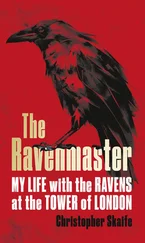CARL SAGAN
The Demon-Haunted World
A tremendous number of people owe their portion of scientific education to the elegant and witty Carl Sagan (1934–1996). His academic work in astronomy and his gift for clear exposition took him from the pinnacles of Harvard and Cornell to the more demotic arena of television and film and fiction, where his novel Contact won him widespread renown. Not unlike Bertrand Russell, Sagan had the faculty of connecting ancient superstitions to modern ones: in The Demon-Haunted World he calmly showed how religion drew on primitive fears and helped to reinforce them, and in his Gifford lectures at the University of Glasgow he connected the slavish belief in gods to the idiotic cult of UFOs and other post-modern delusions.
There are demon-haunted worlds, regions of utter darkness.
—
THE ISA UPANISHAD (INDIA, CA. 600 B.C.)
Fear of things invisible is the natural seed of that which every one in himself calleth religion.
—THOMAS HOBBES,
LEVIATHAN (1651)
The gods watch over us and guide our destinies, many human cultures teach; other entities, more malevolent, are responsible for the existence of evil. Both classes of beings, whether considered natural or supernatural, real or imaginary, serve human needs. Even if they’re wholly fanciful, people feel better believing in them. So in an age when traditional religions have been under withering fire from science, is it not natural to wrap up the old gods and demons in scientific raiment and call them aliens?
Belief in demons was widespread in the ancient world. They were thought of as natural rather than supernatural beings. Hesiod casually mentions them. 218 Socrates described his philosophical inspiration as the work of a personal, benign demon. His teacher, Diotima of Mantineia, tells him (in Plato’s Symposium ) that “Everything demonic is intermediate between God and mortal. God has no contact with man,” she continues; “only through the demonic is there intercourse and conversation between man and gods, whether in the waking state or during sleep.”
Plato, Socrates’ most celebrated student, assigned a high role to demons: “No human nature invested with supreme power is able to order human affairs,” he said, “and not overflow with insolence and wrong….”
We do not appoint oxen to be the lords of oxen, or goats of goats, but we ourselves are a superior race and rule over them. In like manner God, in his love of mankind, placed over us the demons, who are a superior race, and they with great ease and pleasure to themselves, and no less to us, taking care of us and giving us peace and reverence and order and justice never failing, made the tribes of men happy and united.
He stoutly denied that demons were a source of evil, and represented Eros, the keeper of sexual passions, as a demon, not a god, “neither mortal nor immortal, neither good nor bad.” But all later Platonists, including the Neo-Platonists who powerfully influenced Christian philosophy, held that some demons were good and others evil. The pendulum was swinging. Aristotle, Plato’s famous student, seriously considered the contention that dreams are scripted by demons. Plutarch and Porphyry proposed that the demons, who filled the upper air, came from the Moon.
The early Church Fathers, despite having imbibed Neo-Platonism from the culture they swam in, were anxious to separate themselves from “pagan” belief-systems. They taught that all of pagan religion consisted of the worship of demons and men, both misconstrued as gods. When St. Paul complained (Ephesians 6:14) about wickedness in high places, he was referring not to government corruption, but to demons, who lived in high places:
For we wrestle not against flesh and blood, but against principalities, against powers, against the rulers of the darkness of this world, against spiritual wickedness in high places.
From the beginning, much more was intended than demons as a mere poetic metaphor for evil in the hearts of men.
St. Augustine was much vexed with demons. He quotes the pagan thinking prevalent in his time: “The gods occupy the loftiest regions, men the lowest, the demons the middle region…. They have immortality of body, but passions of the mind in common with men.” In Book VIII of The City of God (begun in 413), Augustine assimilates this ancient tradition, replaces gods by God, and demonizes the demons—arguing that they are, without exception, malign. They have no redeeming virtues. They are the fount of all spiritual and material evil. He calls them “aerial animals…most eager to inflict harm, utterly alien from righteousness, swollen with pride, pale with envy, subtle in deceit.” They may profess to carry messages between God and man, disguising themselves as angels of the Lord, but this pose is a snare to lure us to our destruction. They can assume any form, and know many things—”demon” means “knowledge” in Greek—especially about the material world. However intelligent, they are deficient in charity. They prey on “the captive and outwitted minds of men,” wrote Tertullian. “They have their abode in the air, the stars are their neighbors, their commerce is with the clouds.”
In the eleventh century, the influential Byzantine theologian, philosopher, and shady politician, Michael Psellus, described demons in these words:
These animals exist in our own life, which is full of passions, for they are present abundantly in the passions, and their dwelling-place is that of matter, as is their rank and degree. For this reason they are also subject to passions and fettered to them.
One Richalmus, abbot of Schönthal, around 1270 penned an entire treatise on demons, rich in first-hand experience: He sees (but only when his eyes are shut) countless malevolent demons, like motes of dust, buzzing around his head—and everyone else’s. Despite successive waves of rationalist, Persian, Jewish, Christian, and Moslem world views, despite revolutionary social, political, and philosophical ferment, the existence, much of the character, and even the name of demons remained unchanged from Hesiod through the Crusades.
Demons, the “powers of the air,” come down from the skies and have unlawful sexual congress with women. Augustine believed that witches were the offspring of these forbidden unions. In the Middle Ages, as in classical antiquity, nearly everyone believed such stories. The demons were also called devils, or fallen angels. The demonic seducers of women were labeled incubi; of men, succubi. There are cases in which nuns reported, in some befuddlement, a striking resemblance between the incubus and the priest-confessor, or the bishop, and awoke the next morning, as one fifteenth-century chronicler put it, to “find themselves polluted just as if they had commingled with a man.” There are similar accounts, but in harems not convents, in ancient China. So many women reported incubi, argued the Presbyterian religious writer Richard Baxter (in his Certainty of the World of Spirits, 1691), “that ‘tis impudence to deny it.”
As they seduced, the incubi and succubi were perceived as a weight bearing down on the chest of the dreamer. Mare, despite its Latin meaning, is the Old English word for incubus, and nightmare meant originally the demon that sits on the chests of sleepers, tormenting them with dreams. In Athanasius’ Life of St. Anthony (written around 360) demons are described as coming and going at will in locked rooms; 1400 years later, in his work De Daemonialitate, the Franciscan scholar Ludovico Sinistrari assures us that demons pass through walls.
The external reality of demons was almost entirely unquestioned from antiquity through late medieval times. Maimonides denied their reality, but the overwhelming majority of rabbis believed in dybbuks. One of the few cases I can find where it is even hinted that demons might be internal, generated in our minds, is when Abba Poemen—one of the desert fathers of the early Church—was asked, “How do the demons fight against me?”
Читать дальше












